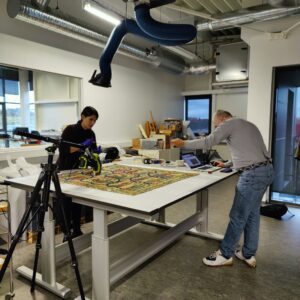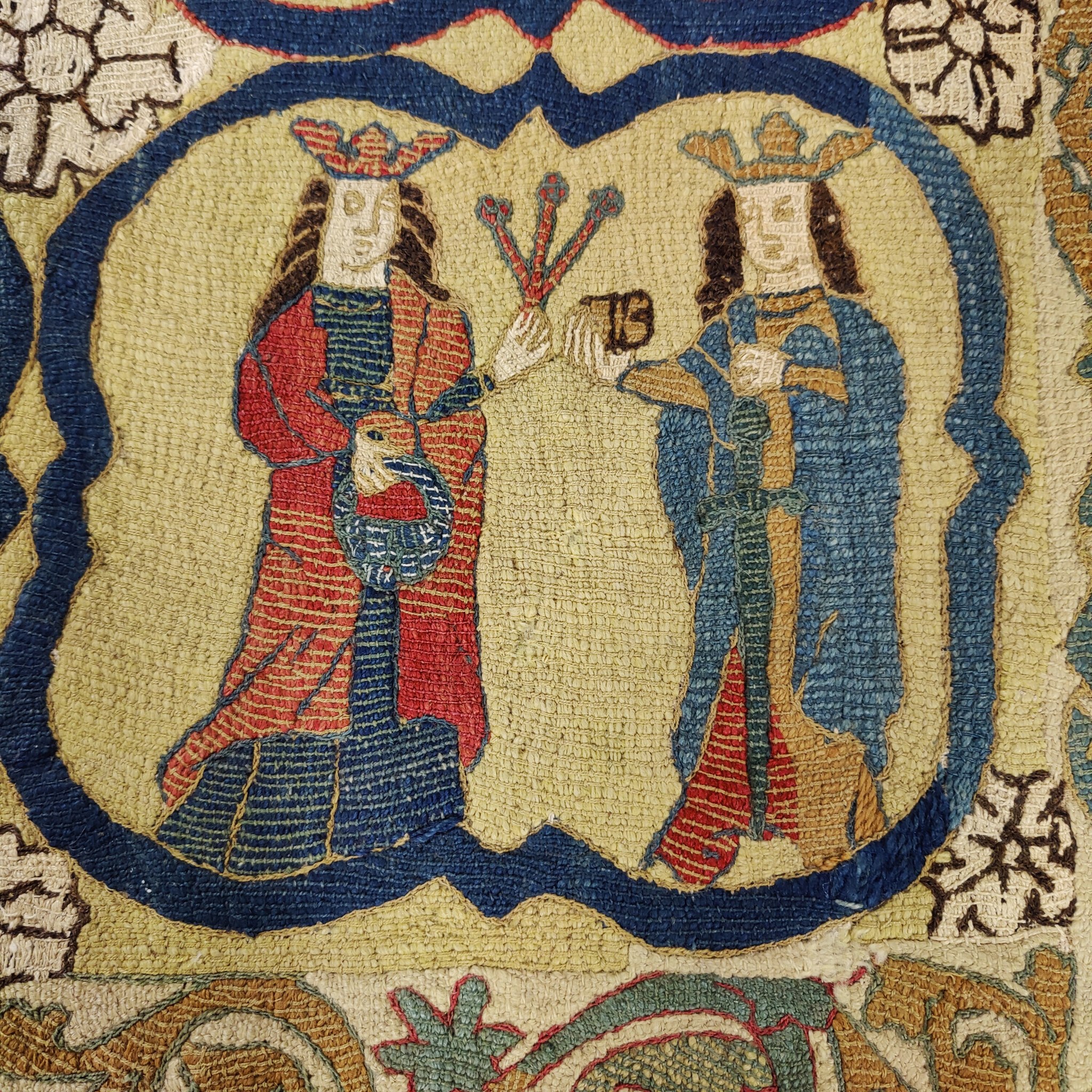Embroidered cloths from the Middle Ages were X-rayed at the National Museum of Iceland as well as analyzes of dyes in cloths and manuscripts. It will be interesting to see what comes out of this all.
The Draflastaðir cloth, which is one of the medieval cloths preserved in the National Museum of Iceland was analyzed with a XRF and Force instruments. The cloth is believed to have been made in Reynistaðaklaustur (monastery). The embroidery appears to have been dyed with two imported plants: the blue color is obtained from indigo and the red from madder (Rubia tinctorum). Textiles have been dyed with these plants all around the world for centuries, but it is interesting to detect these pigments in an Icelandic cloth. The band in the embroidery is made of wool, but the base is linen, probably imported. Perhaps, the band was imported dyed, or the colors were imported for dyeing it.
Útsaumuð klæði frá miðöldum voru röntgenmynduð á Þjóðminjasafni Íslands ásamt því að litarefni í klæðum og handritum voru greind með XRF og Force tækjum. Það verður spennandi að sjá hvað kemur út úr þessu öllu.
Draflastaðaklæðið, sem er eitt af þeim miðaldaklæðum sem varðveitt eru í Þjóðminjasafni Íslands var greint með XRF og Force tækinu. Það er talið vera gert í Reynistaðaklaustri. Í ljós kom að útsaumsbandið var litað með tveimur innfluttum plöntum: blái liturinn er fenginn úr indigo en sá rauði úr madder (Rubia tinctorum). Klæði hafa verið lituð með þessum plöntum um aldir og um allan heim en það er sérlega áhugavert að greina þessi litunarefni í íslensku klæði. Útsaumsbandið er úr ull en undirlagið í klæðinu er hör, líklega innfluttur. Það kann að vera að bandið hafi verið flutt inn litað eða að litirnir hafi verið fluttir inn til litunar.










